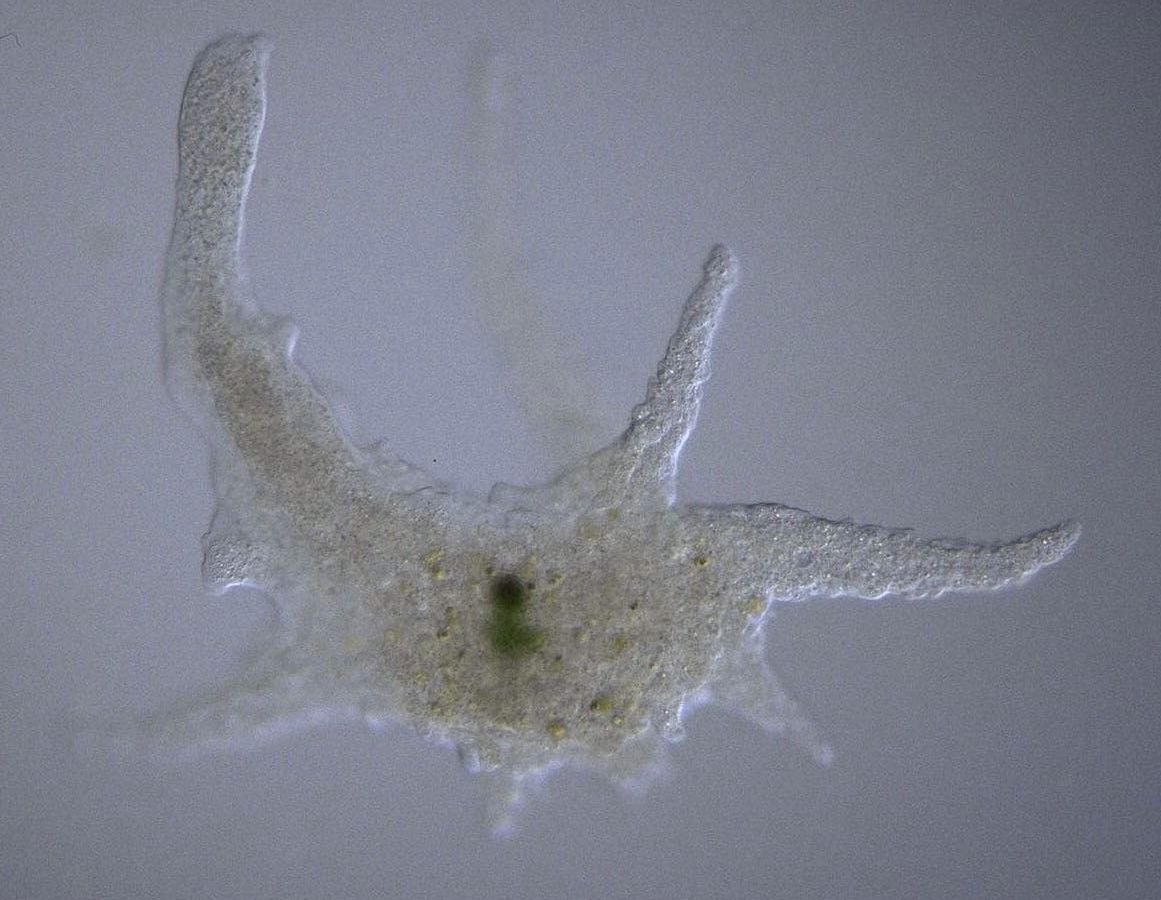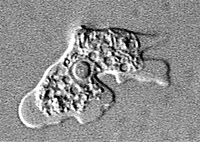
The amoeba is probably everybody’s concept of the simplest life form this earth has to offer. Consisting of one cell, with no particular shape, this nearly shapeless creature has featured in science fiction B-movies, portraying a monster that encompasses its victim from all sides, sucking it into oblivion, absorbing the poor captive into its protoplasm.
Here is an image of the so-called brain-eating version (Naegleria fowleri). The CDC explores the topic of this one-celled species to a great extent, providing much information on it.

Anatomy
The amoeba possesses a cell wall, which encompasses its protoplasm. Its shape is completely mobile, and it can surround prey, re-forming its body around the prey, before consumption.
Within its protoplasm, the creature features, varyingly dependent upon the specific variety, a nucleus, contractile and food vacuoles, mitochondria, biurets and triurets, uroids, the plasmalemma, pseudopodia, a hyaline layer, and a hyaline cap. Does this suggest the so-called protist is a mere blob? Basic features—seen in most varieties—are well illustrated here.
A Land-Dwelling Amoeba
Surprisingly, this one-celled blob does not live just in an aqueous environment. There is also soil-living version—Dictyostelium discoideum. Their life cycle may be seen in Figure 1. Clearly, the creature is not as simple as some may at first suppose. Although aquatic varieties travel by use of what are called pseudopodia, the land-dwelling version travels by raising its body up, then propelling itself across dirt and algae. Locomotion of the land-dwelling amoeba is the theme of this PDF file.
In Medicine
Curiously, the lowly amoeba may be of real practical value in the field of bacteriology and medicine. University of Wisconsin researchers are pursuing the idea that the little blobs of protoplasm may be inserted into the nostrils prior to surgery, for the purpose of consuming MRSA bacteria, thus saving lives. Details may be found in the article cited in the References section, below.
Note: You might also enjoy Volvox Reproduction and Morphogenesis
References:
- U. Wisc. – Madison: Amoeba biotherapy: New approach to combat intractable bacterial infections
- Kids Biology: About Amoeba
- Molecular Station: Amoeba
← Back to Classic Science
← Home

This is a really good amoeba article — useful for teaching kids.
Rohan